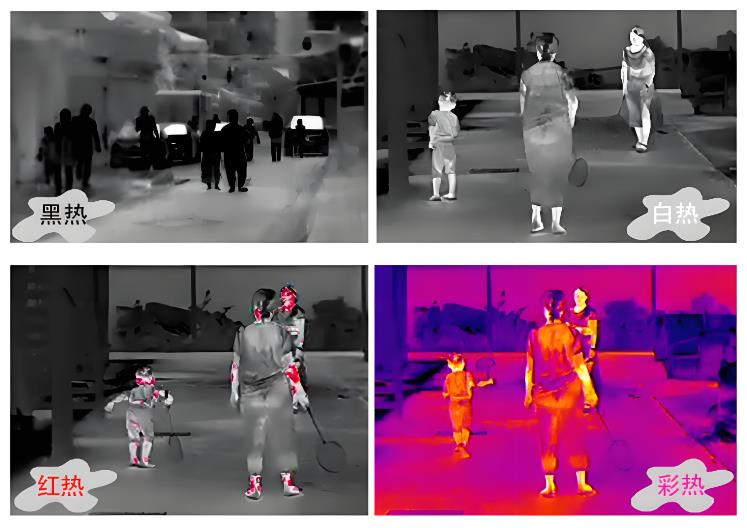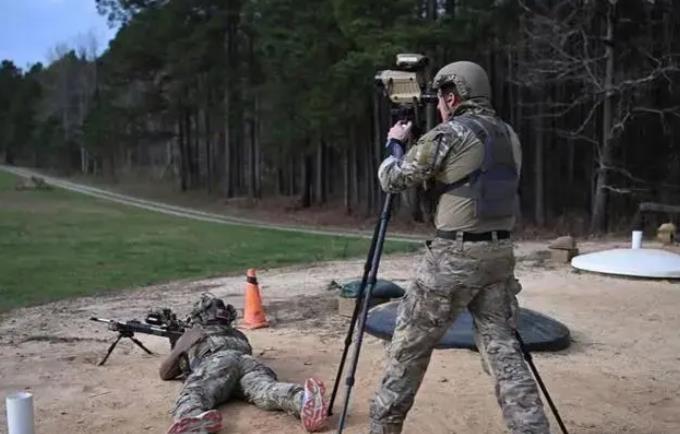Recently, the U.S. military has launched a "climax" of intensive procurement of military night vision equipment. BAE Systems has received orders worth about $97 million and plans to provide the U.S. Army with new night vision goggles and thermal sights. The U.S. Marine Corps has also issued a "recruitment list" for military night vision goggles and has begun to distribute "second-generation binocular night vision goggles" with thermal imaging functions.
For a long time, military operations must "act according to circumstances" according to meteorological conditions such as day and night. If the adverse effects of dark conditions on military operations can be overcome by technical means, it will bring great advantages to combat operations. Guided by this idea, military night vision technology that makes the night battlefield "transparent" came into being. Military night vision equipment can clearly present the "pitch-black" dark battlefield in front of people at night or in dim light conditions, becoming an important means of night warfare.
A war about "fighting for the moon"
From ancient times to the present, battles often start at night. At night, it is usually the time when the ability to respond to the battle is the weakest, and it is also a "god-given opportunity" to launch an attack on the opponent. Therefore, night combat capability has always been an indispensable core combat capability of an army.

Night vision technology mainly uses two technical means, infrared thermal imaging and low-light enhancement, to convert invisible or extremely weak light signals into electrical signals, and then amplify the electrical signals and finally convert them into light signals visible to the human eye. In this way, soldiers can "see clearly" on the complex night battlefield with the help of night vision technology.
During World War II, night vision technology began to appear on the military stage, promoting the rapid improvement of night combat capability, and even frequently used the "generation gap" of night combat capability to "blind" opponents. When the US military landed on Okinawa Island, the Japanese troops hiding in the caves and tunnels often sneaked out at night to attack the US military, causing the US military to suffer a lot. In a hurry, the US military brought the newly developed infrared night vision device to the battlefield, and the Japanese army, who did not know the truth, was "exposed" in the dark night.
Having tasted the sweetness, the US military has always attached great importance to the research and development of night vision equipment and has invested huge sums of money. In the 1980s alone, the US military invested about 8 billion US dollars in the development of night vision equipment.
During the Gulf War, most of the US military's attacks were launched at night. Equipped with advanced infrared night vision equipment, the US military was always able to detect the enemy before the Iraqi army.
In order to continue to maintain its advantage in night combat, the US Army began to develop "enhanced night vision goggles" in 2000. This "third eye" installed on the helmet integrates the images obtained by various night vision technologies, which can effectively cooperate with the US soldiers' battlefield situation awareness in a completely dark environment. By 2008, "enhanced night vision goggles" began to be equipped to the US Army. This "little guy" weighing only a few hundred grams can work continuously for 7.5 hours, and the thermal imaging recognition rate of standing and moving targets at a distance of 150 meters is as high as 80%.

Who is your "third eye" for night combat?
The organic integration of night vision technology and weapons and equipment has further enhanced the ability of combat equipment to obtain information, carry out strikes and coordinate operations at night and in adverse weather conditions. After installing night vision equipment on tanks, ships, aircraft and other equipment, they can not only easily break through the obstacles of the night and control the "initiative" of night combat, but also greatly improve the effectiveness of night combat. Therefore, as the "third eye" for night operations, military night vision technology has made great progress in recent years, among which the most representative ones are infrared night vision equipment, low-light night vision equipment and infrared thermal imaging equipment.
Infrared night vision equipment. Until the 1970s, infrared night vision equipment represented by infrared night vision goggles have always been the "leader" in the field of night vision. Infrared night vision goggles illuminate the target by actively emitting infrared light, and then achieve clear imaging at night by converting the reflected infrared light. The advantages of infrared night vision equipment are large scene contrast, small flicker, clear imaging, and relatively mature technology and low cost. The night vision goggles used by the US military in the Vietnam battlefield are one of the typical representatives of infrared night vision equipment. However, in the fourth Middle East War, the Arab-Israeli sides fought a tank battle, and both suffered heavy losses. The reason was that the infrared night vision goggles "caused trouble". It turns out that in order to find the target, the infrared night vision goggles must first illuminate the target with infrared light, and while discovering the opponent, they also expose themselves.
Low-light night vision equipment. In order to make up for the defects of infrared night vision equipment, the United States successfully developed low-light night vision devices in the 1960s. Compared with infrared night vision equipment, low-light night vision devices do not actively emit infrared light, but receive weak light such as starlight and moonlight reflected by targets on the battlefield, enhance and amplify it, and finally form a night image suitable for naked eye observation. This passive working method is safer and more reliable, not easy to be exposed, and is small and easy to carry.
However, the work of low-light night vision devices is greatly affected by the natural environment, and meteorological conditions such as rain and fog will interfere with their normal use. With the update of technology, the clarity of low-light night vision equipment has been significantly improved. People have also developed low-light televisions that can perform indirect observation and long-distance image transmission based on low-light night vision devices.
Infrared thermal imaging equipment. As a new generation of military night vision equipment, infrared thermal imagers mainly use infrared detectors and optical imaging lenses to receive infrared radiation from targets, and then convert the obtained infrared energy values into infrared thermal images that can be observed by the naked eye. The advantage of infrared thermal imaging equipment is that it is also a passive night vision equipment. It does not rely on its own infrared light source nor the light of the night sky and the moon. It has good concealment, long range, high resolution and strong anti-interference ability. The "second-generation binocular night vision goggles" issued by the US Marine Corps are composed of low-light night vision goggles and infrared thermal imaging components. The US military also has a "single-soldier visual weapon" that can be installed on a slide rail weapon. This is also the lightest infrared thermal imaging sight currently owned by the United States.
Start the "battlefield live broadcast" under the night
As part of the "third-generation enhanced night vision goggles" and "single-soldier visual weapons" plan, the new night vision goggles and thermal sights provided by BAE Systems to the US Army are full of technology. In addition to inheriting the composite night vision capability of "low-light + infrared", the new generation of "enhanced night vision goggles" and "single-soldier visual weapons" also enhance the night vision capability of "infrared contours superimposed on low-light images", realizing a high degree of integration of night vision information data.
"Individual visual weapons" are like the camera on a mobile phone, which can be magnified. In addition to reading thermal imaging images and projecting crosshairs, they can also transmit the "seen" images back to the "enhanced night vision goggles" in front of them in real time. This means that soldiers equipped with these night vision equipment can perform precise shooting in various postures, and even have the ability to extend guns from behind cover to perform precise shooting.
Even more surprising is that future night vision equipment will also enable "battlefield live broadcast" under the cover of night. The new generation of night vision equipment of the US military will transmit information via WiFi, sharing the situational awareness information of individual soldiers on the battlefield. It is estimated that it will not be long before American soldiers will rely on thermal imaging scopes installed on rifles and night vision goggles with WiFi functions to quickly capture targets in an unlit environment.
In another "enhanced binocular night vision goggles" of the US military, attempts are also made to achieve a high degree of integration of battlefield data. The "enhanced binocular night vision goggles" are also specially equipped with high-resolution displays and embedded wireless LANs, which will achieve "seamless docking" with the next generation of US Army weapon sights, further enhancing interoperability and data sharing capabilities, and are expected to achieve rapid data transmission of night battle information between other troops.
In addition to improving data transmission and fusion capabilities, night vision equipment is also constantly "cultivating internal strength". Future enhanced night vision goggles will also have additional functions such as super zoom and eye tracking, and may eventually be made into sunglasses or contact lenses. Color night vision goggles can make soldiers fight at night as if they were in daylight. The clarity of night vision imaging is so clear that even the camouflage patterns on clothes can be vaguely discerned. In recent years, the US Army has even tried to add facial recognition technology to night vision equipment, which can directly detect suspicious persons at night. (Xu Yuefan, Xu Yanmin)
Source: PLA Daily

